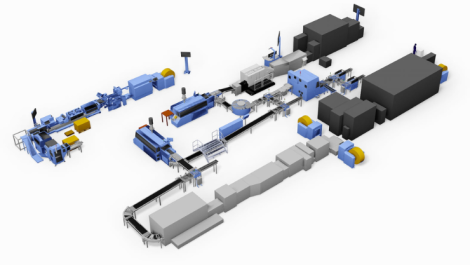There is some good news for the print and paper industries, as European consumer preferences for print recover significantly. New research from Two Sides Trend Tracker, conducted biennially, reveals a regained like for print above online or digital options.
The Two Sides Trend Tracker survey is one of the largest to examine consumer preferences and perceptions of print, paper and paper-based packaging. The research questioned more than 10,000 consumers across 16 countries globally, from South America and the US to South Africa and Europe, providing an assessment of consumer attitudes towards print and paper.
According to Jonathan Tame, managing director of Two Sides Europe, ‘The survey seeks to understand consumer perceptions across a wide range of topics relating to print, paper, paper packaging and tissue products. Having carried out the same research in 2017 and 2021, we are able to assess how these perceptions have changed over time, and have uncovered some interesting trends.’
At the height of the pandemic in 2021, many consumers had shifted from print on paper to the internet and read more on digital devices. This occurred across all categories of communications, including newspapers, magazines, books, catalogues, bills and statements. That trend has reversed, however, with consumer preference for print rising significantly over the past two years.
‘Despite the surge in online media and widespread withdrawal of printed communications during the pandemic, it’s clear that many consumers still value print on paper,’ remarked Mr Tame, adding, ‘especially when reading books and magazines.’
Crunching the numbers
The survey shows that the percentage of European consumers who prefer to read printed books has risen to 65%, up from 53% in 2021. The preference for printed magazines is now 51%, up from 35%. For newspapers and catalogues the upward trend is similar, with print preferences up five percentage points to 31 from 26, and to 33 from 21, respectively. The preference for paper bills rose significantly, doubling from 19% to 38%, and the preference for printed personal health information rose from 29% to 39%.
The survey also sought opinion on the advantages of reading in print. This revealed that more than half (52%) agreed or strongly agreed with the statement ‘I think children and students learn more when reading printed rather than digital books and course materials,’ compared to just 16% who disagreed or strongly disagreed. 45% agreed or strongly agreed with the statement ‘I get a better understanding of the story when reading news in print rather than online,’ compared to 28% who disagreed or strongly disagreed.
‘This survey reveals a number of fascinating facts about print and the many advantages it has for consumers,’ said Mr Tame. ‘As we complete our analysis of all topics covered by the study, including packaging and the environment, we’ll be sharing even more insights for the print and paper-based packaging industry.’
An executive summary of the Trend Tracker Survey 2023 will be published in June and available to industry stakeholders on request. The complete survey data broken down by country, age and gender is available to Two Sides members only or available to purchase.






